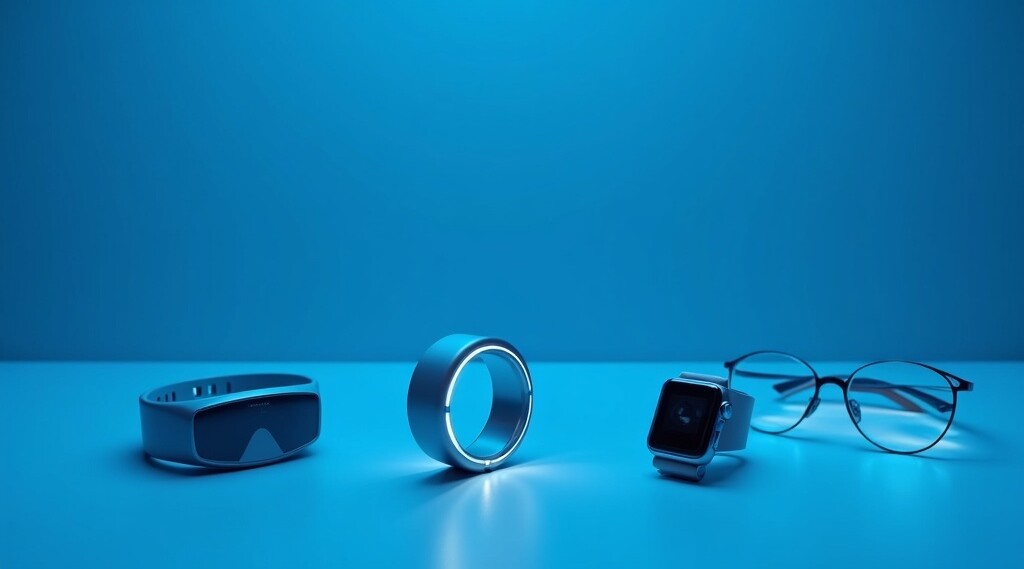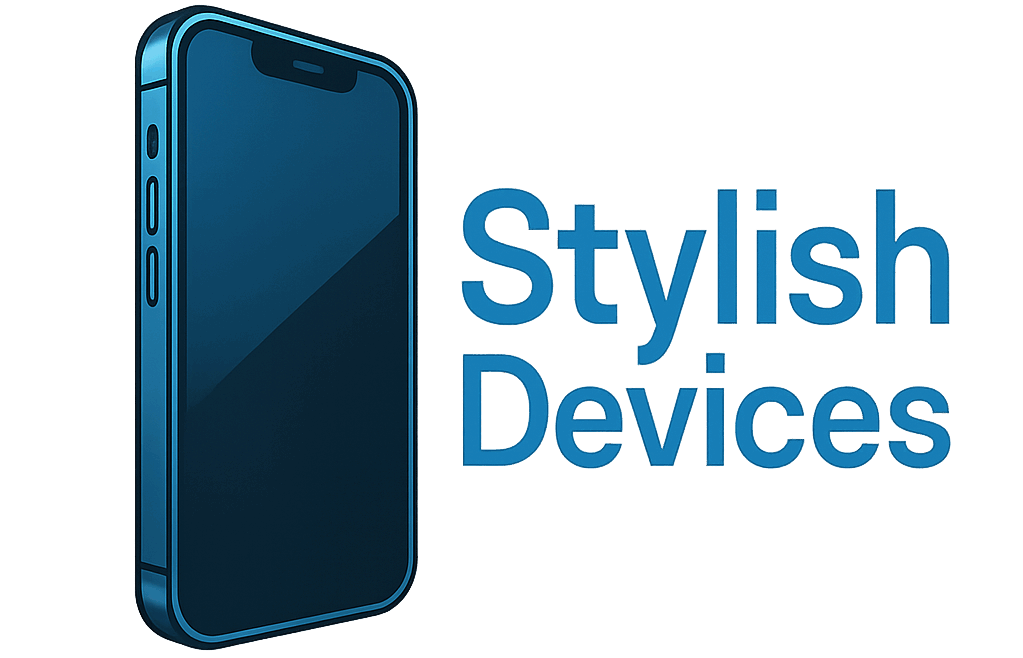 Wearable devices keep growing more advanced every year, and 2025 is shaping up to be a breakthrough moment for these gadgets. From smartwatches and fitness trackers to smart rings and intelligent glasses, technology is blending more closely with everyday life. Many people are looking for devices that help them manage health, communicate, or even give a boost to safety. The variety is huge. Choosing the right wearable starts with knowing what’s new and which features matter most to your daily routine.
Wearable devices keep growing more advanced every year, and 2025 is shaping up to be a breakthrough moment for these gadgets. From smartwatches and fitness trackers to smart rings and intelligent glasses, technology is blending more closely with everyday life. Many people are looking for devices that help them manage health, communicate, or even give a boost to safety. The variety is huge. Choosing the right wearable starts with knowing what’s new and which features matter most to your daily routine.
If you’re interested in tracking your health, getting instant notifications, or just staying ahead with smart technology, there’s never been a better time to explore wearables. Companies are focusing on comfort, longer battery life, better sensors, and even stylish looks that suit every lifestyle. This lineup covers the top 10 wearable devices for 2025, based on features, user experiences, and what people actually find useful in day-to-day use.
This guide highlights the most talked-about and reliable wearable devices of 2025. I’ll break down what I like about each one, including features, practicality, and who they work best for. So, let’s now have a look at the features I think you’ll really like.
1. Apple Watch Series 10: A Smartwatch Favorite
The Apple Watch Series 10 steps up with a brighter microLED display and a faster processor. I’ve found the new health sensors deliver more precise heart rate, oxygen, and temperature tracking. Using the improved Siri on-wrist feels snappy, while fall detection and emergency SOS features are still super important for peace of mind.
If you use an iPhone, the Series 10 syncs seamlessly. The battery comfortably lasts a full day with heavy use. For fitness fans, built-in GPS, advanced workout modes, and water resistance let me track activities indoors and out. WatchOS 11 introduces redesigned widgets and smarter sleep analytics, which help me stay on top of my schedule and well-being.
One thing that stands out for me is the attention Apple pays to accessibility features, like voiceover and larger font options, making the watch useful for even more people. Plus, the latest models have more durable casings and a greater variety of bands, meaning you can make it fit your style easily.
2. Samsung Galaxy Ring: Smart Health in a Simple Form
The Samsung Galaxy Ring stands out for how easy it is to wear all day and night. It packs sensors for heart rate, blood oxygen, stress, and temperature into a slim, comfortable ring. I like that it automatically logs sleep stages and sends gentle reminders to move if I’m inactive for too long.
The ring’s battery life goes up to seven days on one charge. Notifications from your Samsung phone come through subtle vibrations, which is handy when you want quiet updates. All the health data syncs directly with Samsung Health.
This device also comes in several finishes, so you can pick a look that matches your personal style. The Galaxy Ring is water resistant, so you don’t have to worry about wearing it while washing your hands, and it holds up well to everyday activities.
3. Google Pixel Watch 3: Fitness and Smarts Combined
Pixel Watch 3 fits well with Android users (especially Pixel phones). I can use the updated Fitbit app for advanced fitness tracking, ECG, and real-time heart monitoring. Google Assistant is now even faster, which makes voice commands really practical for setting reminders or checking the weather.
The watch design is sleek and comfortable, and the always-on display remains clearly visible outdoors. New battery management tools help me get through the whole day, even with GPS and notifications running. Emergency call features work whether my phone is nearby or not, which I appreciate when I’m out for a run.
For those who like customization, the watch bands are easy to swap, and there are loads of choices for faces and apps. The integration with Google Wallet and Maps makes city navigation and payments straightforward on your wrist.
4. Oura Ring Gen 4: Ultimate for Sleep and Energy Tracking
Oura Ring Gen 4 keeps its focus on sleep and recovery. I find the daily readiness score helpful for deciding when to push harder or let myself rest. It tracks temperature, heart rate variability, and blood oxygen in real time.
The ring is lightweight and stylish enough to wear everywhere. Data syncs to the Oura app, which breaks down sleep quality and recovery trends in a clear way. This makes it a top choice if you care most about sleep and long-term health rather than fitness stats alone.
For anyone training or living a busy lifestyle, the Oura Ring’s gentle alerts and thorough reporting help guide daily habits. The ring also features a discreet design, so it never feels bulky or flashy.
5. Garmin Venu 3: Best for Fitness Training and Outdoors
Garmin Venu 3 brings a bright AMOLED screen and expanded battery life that can last nearly a week. I appreciate its advanced GPS tracking and detailed metrics for running, cycling, and even golf.
The Venu 3 includes coaching tips, audio prompts, and performance analytics that give me real feedback. Hydration, stress tracking, and adaptive workouts help me improve without extra gadgets. It works with both Android and iPhone, and its offline music support and contactless payment make it useful beyond workouts.
Outdoor enthusiasts will value the robust build, fast-satellite connections, and in-app route planning. The watch’s sleep and pulse-oximetry features are also especially useful for anyone keeping an eye on their overall wellness.
6. Meta Ray-Ban Smart Glasses: Audio and Camera in Your Shades
Meta Ray-Ban Smart Glasses turn regular sunglasses into smart devices. I can listen to music or podcasts and take hands-free photos with discreet speakers and microphones built in. The small camera lets me capture short videos and photos without taking out my phone.
If you prefer voice commands, Meta AI is always available for basic tasks. I use them for calls on the go and recorded reminders. The stylish Ray-Ban design looks just like regular shades, which makes wearing them all day easy.
For privacy-minded users, Meta has implemented clear indicators so others know when the camera is being used. The smart glasses also offer polarized lens options, so they’re just as practical for sunny days as for tech tasks.
7. Whoop 5.0 Band: For Athletes Focused on Recovery
Whoop 5.0 skips the screen and stays simple, focusing on collecting the most accurate health data possible over long periods. I like how the band continuously tracks heart rate, sleep, and exertion levels, giving recovery and strain scores each day.
The battery lasts around five days, and it’s comfortable to wear night and day, even during intense workouts. Detailed reports help me see long-term trends and optimize rest and activity for better results.
If you’re someone who values health data and performance insights, the companion Whoop app lets you see everything with easy-to-understand charts and graphs. The strap is washable, and Whoop offers different bands for style or comfort.
8. Fitbit Sense 3: Stress, Fitness, and Wellness Insights
Fitbit Sense 3 stands out for tracking stress levels and health metrics beyond just steps and calories. I can get ECG readings, skin temperature, and in-depth sleep analytics. Personalized recommendations help me adjust routines for better wellness.
This device is compatible with most smartphones and it has built-in GPS for workouts. I like the guided breathing exercises and EDA scan for managing stress during busy days.
The bright AMOLED screen and up to six days of battery life add to the overall convenience. Fitbit’s social features also let you share achievements or challenge friends to healthier habits.
9. Amazfit Balance: Long Battery, Affordable Price
Amazfit Balance gives me essential smart features with two-week battery life. It offers accurate health tracking for steps, sleep, stress, and SpO₂, along with over a hundred sports modes.
On-wrist payments, Alexa support, and customizable watch faces make this model easy to use every day. It’s a smart pick if you want something reliable and budget friendly.
The comfortable silicone band, easy-to-navigate interface, and robust companion app are big pluses. For anyone new to wearables, Amazfit packs in enough features to get started without breaking the bank.
10. Withings ScanWatch 2: Hybrid for Classic Style and Health Tracking
Withings ScanWatch 2 combines an analog watch look with modern health features. I can monitor heart rate, blood oxygen, and sleep without a touchscreen. The discreet digital display shows notifications and activity stats.
The battery keeps going for nearly a month on a single charge. Withings Health Mate app tracks my progress and even allows ECG readings. The ScanWatch 2 is a stylish option for anyone who prefers a traditional look while staying connected.
For travelers or busy professionals, knowing the watch works for weeks without charging is a huge benefit. The ScanWatch is also certified for medical accuracy by some health authorities, adding peace of mind for users focused on health data.
How to Choose the Right Wearable Device for You
Picking the best wearable device comes down to your lifestyle and what you want most. If you need deep health insights, smart rings and fitness bands like Oura Ring or Whoop are hard to beat. For all around functionality and notifications, watches like Apple Watch, Pixel Watch, or Garmin Venu offer a balanced experience.
If budget and battery life matter, there’s a lot of value in options like Amazfit. For those who care about appearance and classic style, hybrid watches such as Withings ScanWatch stand out.
Thinking about what you’ll use the device for every day helps narrow down the choices. Battery life, comfort, and compatibility with your phone are really important. Features like GPS and water resistance are key if you spend time outdoors or describe yourself as active. Tech fans might want to invest in devices that update regularly and get new features each year. Also, be sure to check if the device fits nicely with your existing health or fitness apps, as this can make tracking long-term progress much easier.
FAQs: Wearable Technology in 2025
What is the next big wearable technology?
Smart rings are getting a lot of attention in 2025. Devices like the Samsung Galaxy Ring and updated Oura Ring Gen 4 fit a surprising number of sensors into something small and simple. I notice more health professionals and tech fans talking about these rings for all-day tracking. Other big changes are happening in smart glasses, which make it easier to stay connected without pulling out your phone.
What is the future of wearable devices?
Wearable devices are becoming more accurate, more comfortable, and able to connect with smart home tech, healthcare, and even workplaces. I expect future wearables to include medical-grade sensors, even better battery life, and stronger privacy controls. Many people are asking for more style options too, and companies are responding with collaborations and customizable looks. The biggest change is that wearables are moving from “nice-to-have” gadgets to really useful tools for wellness, safety, and daily productivity.
The global market for wearables is also growing fast, with more brands entering the field each year. This means consumers can expect more choice, better prices, and new features as technology keeps evolving. As more people track their sleep, fitness, and daily routines, wearables could play a bigger role in health research, helping users and professionals understand wellness trends on a broader scale.
